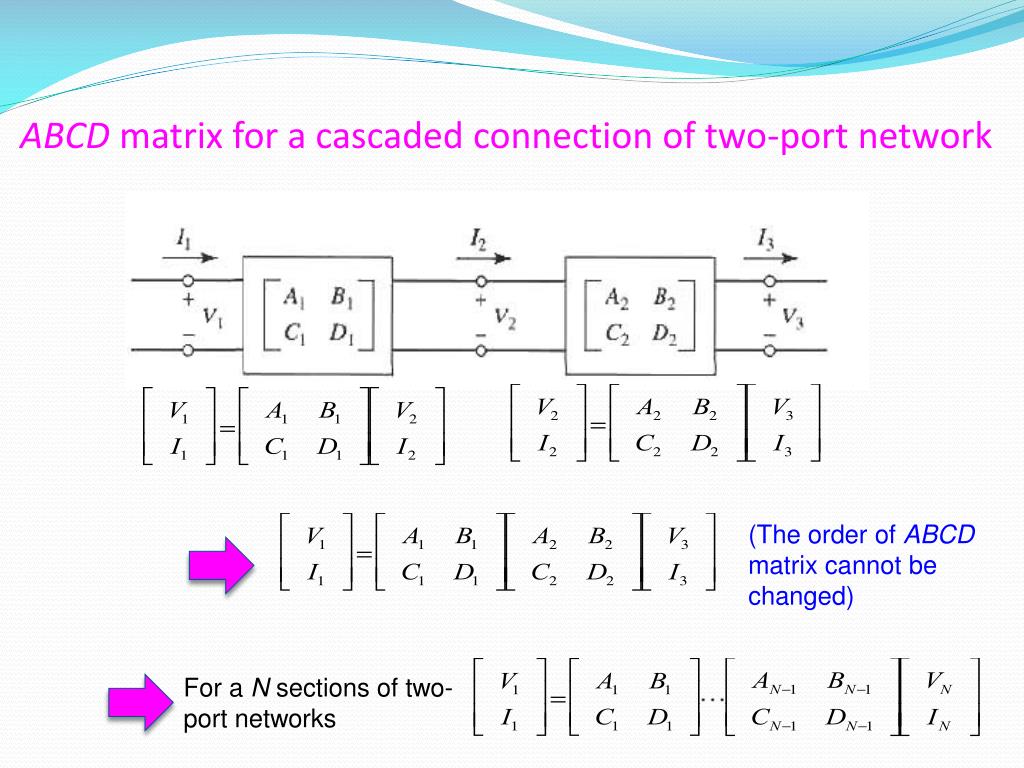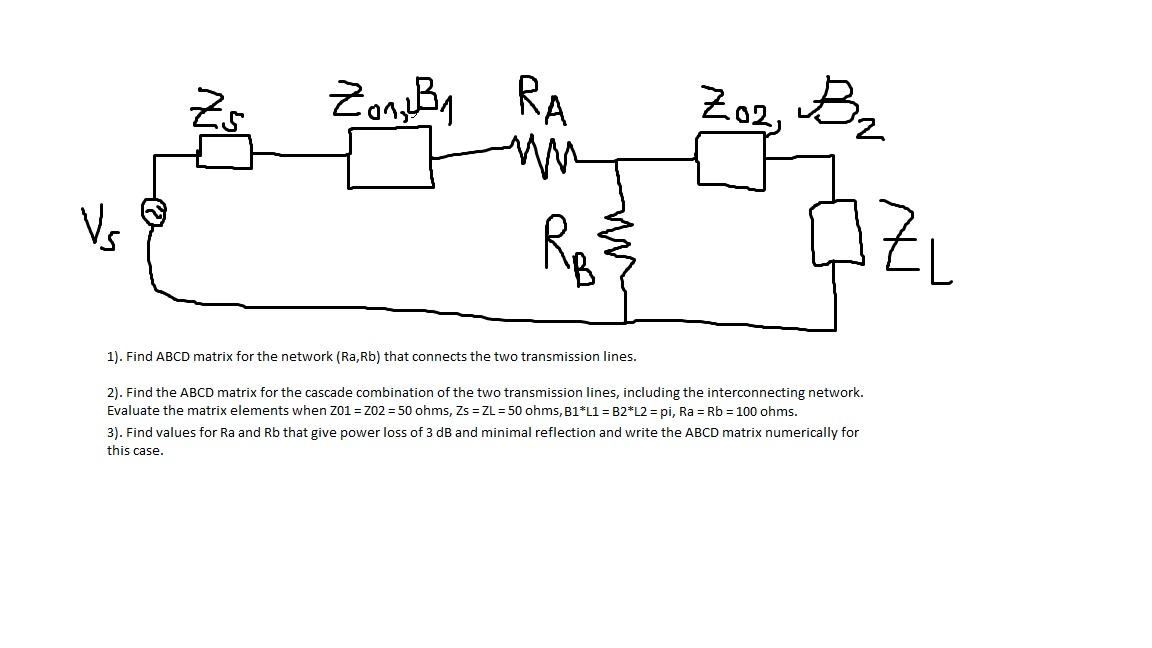
If you look at the definition above, it’s easy to see how a cascaded ABCD matrix can be created by multiplying individual ABCD parameter matrices for different circuit elements. I’ve always thought that ABCD parameters were formulated backwards until I started looking at cascaded networks. With this in mind, there are two primary reasons you could use ABCD parameters instead of S-parameters for some signal integrity analyses: cascading and transfer function calculations. Power loss/reflection carried by a propagating waveīidirectional with appropriate sign definitions, no reflection consideredīidirectional at each point, including reflection Typically calculated in terms of other parameters, but can be calculated directly (S11) or from propagation/losses (S21)Įnforced within the transfer function using a Hilbert transform and truncationĮnforced by imposing band-limiting, windowing, and truncationĬurrent entering/exiting a port, voltage measured across a port, agnostic to wave propagation As we can see, both parameter sets omit some information about signal behavior, and there is no objectively “best” set of parameters to use.ĭirect calculation of current and voltage in circuit/interconnect design and analysisīroadband measurement characterization, such as in microwave/mmWave interconnectsĬan be calculated directly for any known impedance/admittance The table below compares S-parameters to ABCD parameters in several aspects. I will say this: don’t trust the majority of S-parameter definitions you find online because they are terrible at explicitly communicating where the definition applies. As a result, this makes it easy to use an S-parameter definition in a system where it doesn’t apply. This isn’t to say that everyone is wrong instead, these descriptions of S-parameters are defined for very specific systems, and the lack of context (or even diagrams) creates a ton of confusion, especially for beginners, and it sometimes causes me to question my own understanding. Why Use ABCD Parameters Instead of S-parameters?įrankly, almost every discussion I’ve seen on S-parameter definitions for 2-port networks gives inconsistent equations.

This is an excellent resource for microwave circuit design and transmission line design. If you want a good resource that contains S-parameters and ABCD parameters for a variety of 2-port networks, take a look at this document from Caspers. Definition of ABCD parameters in a 2-port network.ĪBCD parameters are surprisingly easy to calculate for individual circuit elements in a network, as well as in phenomenological models describing behavior. The definition of an ABCD parameter matrix for a 2-port network is shown below. However, they are conceptually and mathematically different. In fact, S-parameters can be calculated from ABCD parameters and vice versa. I’ll admit, this is a bit long-winded, and it seems to sound a lot like S-parameters. What Are ABCD Parameters?ĪBCD parameters are a simple set of equations that relate the voltage and current at the input of an N-port network to the voltage and current measured at the output of the network. In this article, I’ll run through some of the advantages of ABCD parameters and why you might want to use them instead of S-parameters. However, they can be converted between each other (much like other network parameters), your time spent predicting and analyzing signal behavior can be made much easier when you use ABCD parameters for your circuits and interconnects. These two sets of network parameters give designers a simple way to describe siganal behavior in N-port networks, although most examples are only presented as 2-port networks. These days, many important concepts in analog signal integrity are now critical for determining digital signal integrity, and the analysis tools used by the microwave community must be transferred to the digital community.Įnter S-parameters and ABCD parameters.

S-parameters, ABCD parameters, H-parameters… they all have their place in PCB design and analysis.

If you look at a microwave electronics design textbook, you’ll see a number of parameters that are used to describe N-port networks.


 0 kommentar(er)
0 kommentar(er)
